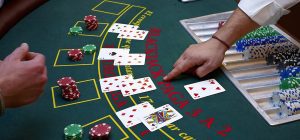This is how the Colombian trains them in the United States

Morristown, New Jersey (US), where The Seeing Eye, a non-profit organization and school dedicated to breeding and training guide dogs since 1929, is located is where Oscar Pelaez, a Bogotá business manager who immigrated to the North American country a few years ago, Hundreds of German Shepherds, Labrador and Golden Retrievers have trained guide dogs, the profession that “discovered” him, and which today fills him with great joy and satisfaction.
“This is a demanding profession and job, because in order to practice it it is necessary to meet certain requirements such as to be a professional in a profession, or to complete a three-year educational program that includes classes, exams and practices in subjects not only related to dogs and dog training. But in matters relating to the blind, conditions, diseases, etc. That. This way we can improve the users’ quality of life, allowing them greater independence and dignity,” says Pelaiz.
Part of the training consists of preparing the dog to recognize obstacles and overcome challenges that the visually impaired person encounters in their daily life, using real and simulated scenarios on the campus of The Seeing Eye, a process that takes about two years. Gross, where the puppy is sent to the potential user’s family to check its adaptation, back to school to re-adapt to other dogs, and assigned to a trainer again to continue training until it is definitively assigned.
“During this process, we collect information about the conditions in which the dog will live, whether it is a city or a rural area, about the blind person’s lifestyle, personality, family and work; we analyze how the user walks without the cane to assess walking speed, harness velocity, i.e. the number of pounds which he can resist to determine which dog is best for him. We assess what type of dog he feels best with, there are those who, for example, are allergic to golden hair, so it wouldn’t be a good choice, others prefer a German Shepherd, etc.,” he explains. Pelayes.
Everyone’s work
During preparation, the guide dog learns, among other things, to walk along sidewalks, to stop at each edge of the platform, and to adapt to the person, a process in The Seeing Eye that lasts 27 days, the time during which the dog and user of the school facilities cohabit Accompanied by coaches, they pass different types of routes which include high-traffic streets, getting on and off the bus, going to shopping malls, walking on obstructed streets, and high-demand parking.
A very important aspect, the expert highlights, “is teaching it the disobedience intelligence, i.e. when the user gives the command to the dog but he sees or feels that a car is approaching, or there is a gap or an obstacle, the dog does not obey, does not sit, does not stop, does not return and does not continue because it “knows” That there’s a risk. It’s a job of 50% of the individual and 50% of the dog.”
Another essential element is that the dog learns to measure the extension of the body, that is, to measure the space that the user passes next to him, and if that is not enough, the guide makes a gesture or movement so that the action of the person behind him is done. So that it can pass efficiently and safely.
During the process, the dog is evaluated and qualified, if it meets the required conditions and requirements, it is approved as a guide dog and assigned to the user. It’s worth noting that all dogs The Seeing Eye works with are bred directly by the organization and must meet strict criteria, including medical tests, temperament and size, set by the International Guide Dog Federation – International Guide Dogs Federation (IGDF), for its English acronym ) – headquartered in London (England).
“The average working life of a guide dog is between 6 and 10 years, depending on where they live, and generally if they are in a city, where there are high levels of stress, a dog can work an average of 6 to 7 years; while in In rural areas their work can last between 8 and 10 years. After this time, we assess whether it should be pulled out as a guide dog, in which case the user can keep it as a pet or bring it back to school, and we assign it a new guide dog,” Pelayes notes. .
For an experienced trainer, the process is emotionally and physically demanding, but at the same time very rich, “because in the end when we finally get to unite this user guide dog duo, it’s a very beautiful moment: one, the work done with the guide dogs, and second, seeing that you’ve managed to Helping another person be more independent and independent, and leave happily with their “new best friend,” he points out.

in Colombia
Colombian regulations regarding the accessibility of persons with visual impairments to these means of subsistence, mainly stipulated in Articles 4 and 9 of Decree 1660 of 2003; In Decree 1538 of 2005, which provides for allowing access to guide dogs, and other necessary aid to those who experience difficulties or limitations in their movement and movement; And in the Police Code, which indicates in Article 124, No. 2, guide dogs cannot be prevented from entering public places and / or mass transportation, since they constitute an “extension” of the owner.
However, there are still many challenges to overcome as there are still few organizations dedicated to their training, however, it is worth highlighting the work done by the Colombian Foundation of Vishnú del Cypres Guide Dog, born in 2000, With the aim of improving the quality of life for people with visual impairments in the country, which has provided more than 200 guide dogs for free, to also be a pioneer in Latin America.
It is important to emphasize, as explained by the National Institute of the Blind – INCI – that not all blind people or people with low vision can be guide dog users, as there are some minimum requirements such as: being of legal age, ability to move independently with a cane and a level good direction; Have sufficient psycho-physical ability to handle and care for the dog and be responsible for its care.
In addition, the user must have a solvent economic status that allows him to take care of the expenses arising from the dog’s possession, such as his food and veterinary care, a full study conducted by Vishnú del Cypres, as a licensed entity for dog training and supply. Guidance for people with disabilities.

“Coffee fanatic. Gamer. Award-winning zombie lover. Student. Hardcore internet advocate. Twitter guru. Subtly charming bacon nerd. Thinker.”











